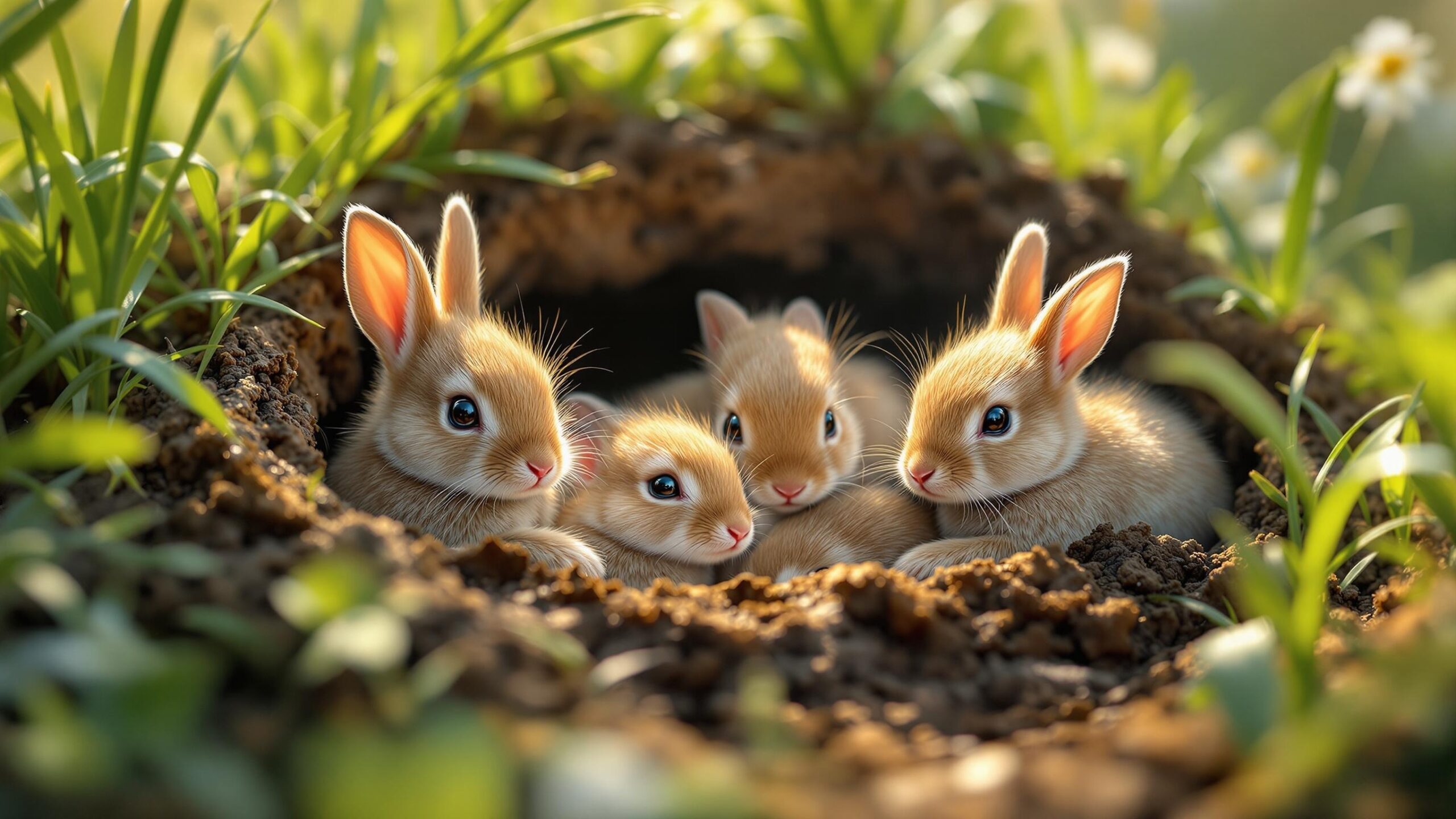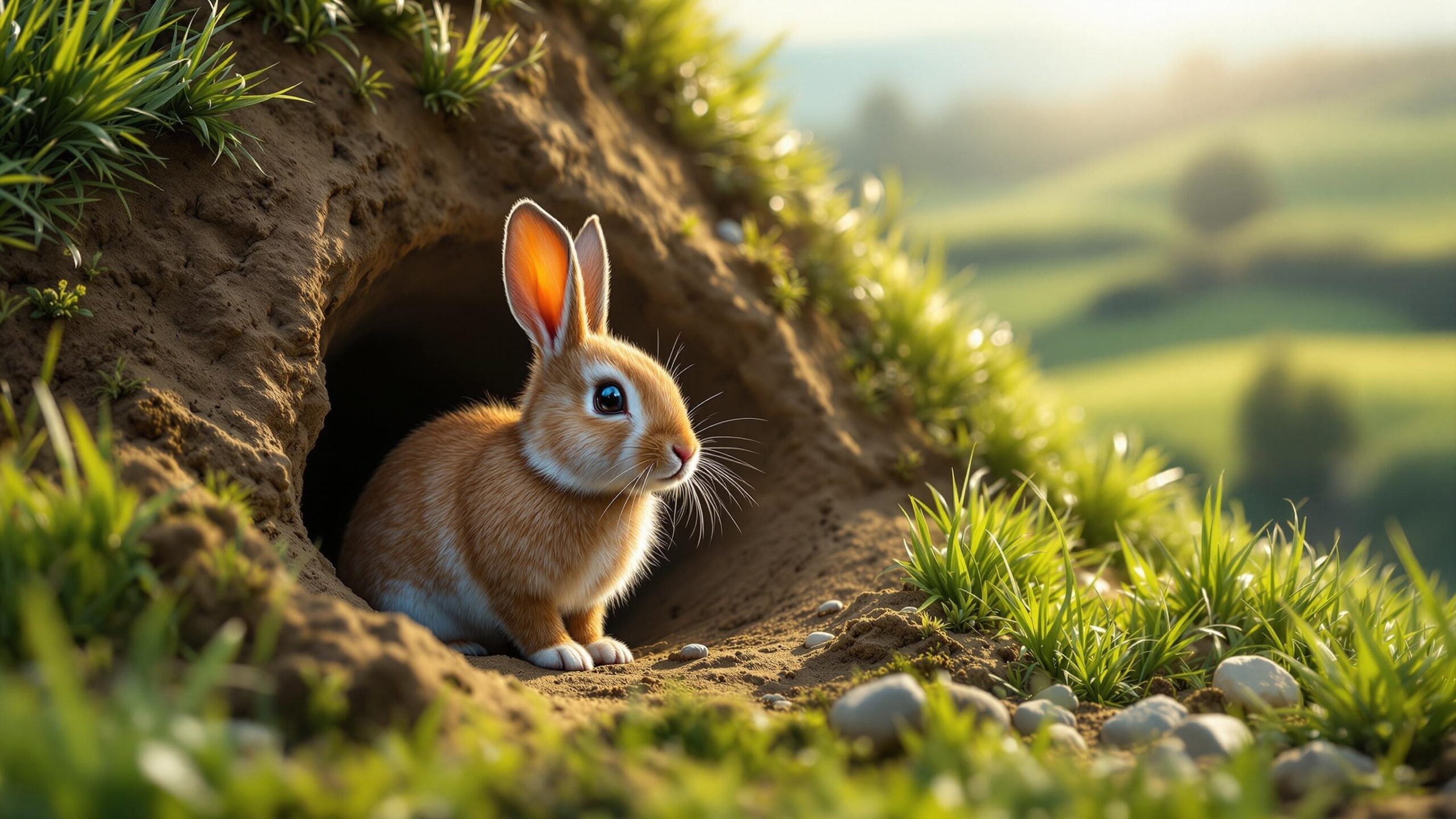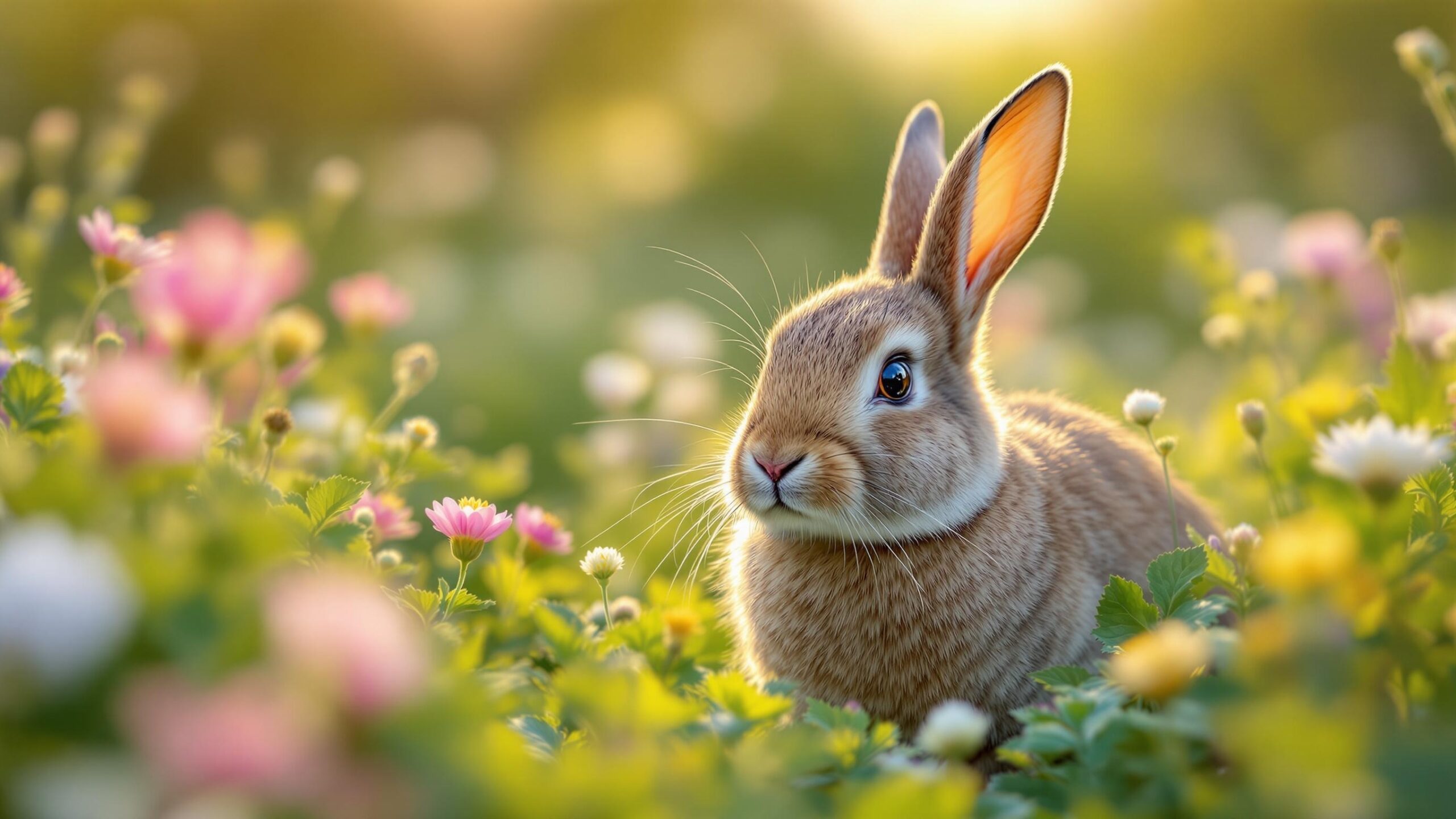European Rabbit: The Wild Ancestor of Our Domesticated Companions
Among the most recognized mammals in the world, the European rabbit holds a fascinating dual identity: a resilient and resourceful wild creature, and the genetic foundation of the domestic rabbits found in homes, farms, and pet shows across the globe. Scientifically known as Oryctolagus cuniculus, this species has not only shaped ecosystems but also human culture, agriculture, and pet keeping in ways few animals have. Whether bounding across a rural field or burrowed deep within an underground warren, the European rabbit is a master of adaptation and survival.
Origins and Natural Distribution
The native range of the European rabbit is relatively small, historically limited to the Iberian Peninsula and parts of southern France. However, human influence has expanded its reach to every continent except Antarctica. Today, it thrives in regions as diverse as the Australian outback, the rolling hills of New Zealand, the farmlands of England, and the rocky terrain of the Mediterranean.
The rabbit’s introduction to new lands began centuries ago, especially during the Roman era, when they were valued for meat and fur. Over time, European settlers continued this trend, introducing rabbits to distant colonies for hunting and food. While their adaptability has led to success in many environments, in some regions—particularly Australia—their rapid spread has had devastating effects on native species and vegetation, leading to concerted control efforts.
Physical Characteristics and Senses
The European rabbit is a small to medium-sized mammal, typically weighing between 2.2 and 5.5 pounds and measuring around 15 to 20 inches in length, including the tail. Its fur is usually a mottled gray-brown, though coloration can vary, particularly among domesticated strains. The underbelly is paler, often white, and its most recognizable feature may be its white tail, which flashes when it runs.
The rabbit’s long ears serve a dual purpose: enhancing hearing and helping regulate body temperature. Its eyes, located on the sides of the head, provide a nearly 360-degree field of vision, allowing it to detect threats from almost any angle. These features, combined with powerful hind legs capable of swift, zigzagging sprints, make the European rabbit well equipped to avoid predators in open landscapes.
Social Structure and Burrowing Behavior
A hallmark of the European rabbit’s behavior is its complex social organization and reliance on burrowing. Unlike many other rabbit species, which live solitary or loosely social lives above ground, the European rabbit builds intricate underground homes called warrens. These tunnel systems can stretch for tens of meters and include multiple entrances, nesting chambers, escape routes, and shared corridors.
Warrens are typically inhabited by social groups composed of several adults and their young. Within the group, a dominance hierarchy governs breeding rights, access to prime nesting sites, and foraging order. Conflicts are usually resolved through displays and chases rather than outright aggression, though fighting between males can occur, especially during breeding season.
The communal nature of warrens allows for cooperative defense, social bonding, and increased survival rates for young. Rabbits maintain and expand their tunnels constantly, helping aerate soil and provide microhabitats for other organisms—yet another way they impact their ecosystems.
Diet and Digestion
European rabbits are strict herbivores, and their diet consists mainly of grasses, herbs, leaves, and roots. They also consume buds, bark, and garden plants when available, which can lead to conflict with farmers and gardeners. Despite their simple appearance, rabbits have one of the most efficient digestive systems in the mammalian world when it comes to extracting nutrients from fibrous plant matter.
A distinctive aspect of their digestion is a behavior called coprophagy. Rabbits produce two types of feces: regular droppings and nutrient-rich soft pellets known as cecotropes. These are re-ingested directly from the anus, allowing the rabbit to absorb essential vitamins and nutrients that were not extracted during the first pass through the digestive tract.
This system is especially important given the low nutritional value of their food. The ability to glean every bit of usable energy is what allows rabbits to maintain their energy-intensive lifestyle—grazing, breeding, digging, and fleeing from predators.

Reproduction and Life Cycle
European rabbits are famously prolific breeders, a fact that contributes to both their ecological success and their invasive potential. Breeding can occur year-round in warmer climates but is typically concentrated from late winter through early autumn in temperate zones.
After a gestation period of about 28 to 31 days, the female gives birth to a litter of three to eight kits in a specially dug burrow called a nest chamber or stop. The young are born blind, hairless, and entirely helpless, relying on their mother’s milk and the warmth of the burrow. They grow quickly and begin emerging above ground within two to three weeks.
A single female can produce four or more litters per year, and the young reach sexual maturity in as little as three to four months. This reproductive efficiency, combined with low infant survival rates due to predation, ensures the species’ persistence across many landscapes.
Predators and Defense Mechanisms
As a primary prey species in many ecosystems, the European rabbit is under constant threat from a host of predators. In its native range, these include foxes, weasels, badgers, birds of prey, and snakes. In areas where they have been introduced, new predators—both wild and domestic—have joined the list.
To survive this gauntlet, rabbits rely heavily on their keen senses, camouflage, and flight response. When threatened, a rabbit will often freeze, blending into the surrounding terrain. If the threat approaches, it bolts with impressive speed, zigzagging to avoid interception. The flashing white tail may act as a distraction, drawing the predator’s attention away from the body.
The warren provides the ultimate protection. With its many entrances and tunnels, a rabbit can often escape underground, where larger predators cannot follow. The tight-knit social structure also aids in early detection of danger, as group members remain alert and signal one another with foot thumps and postural cues.
Ecological Role and Environmental Impact
The European rabbit is considered a keystone species in many ecosystems. Its grazing influences plant succession, helping maintain open grasslands and prevent shrub encroachment. In some Mediterranean habitats, their foraging behavior supports biodiversity by promoting a mosaic of different plant types.
Their burrowing, while sometimes destructive to human-made structures, has ecological benefits. Warrens provide shelter not only for rabbits but also for lizards, insects, amphibians, and even small birds. Rabbit droppings enrich the soil, cycling nutrients and supporting invertebrate life.
However, the story changes in non-native environments. In places like Australia and New Zealand, where rabbits were introduced without natural predators, their populations exploded and caused widespread environmental degradation. Overgrazing led to the loss of native vegetation, soil erosion, and the decline of endemic species. These regions have since implemented control measures ranging from fencing and trapping to biological controls like the myxoma virus and rabbit hemorrhagic disease virus (RHDV).
Domestication and Cultural Significance
All domestic rabbits, no matter their breed or appearance, descend from the European rabbit. Domestication is believed to have begun in southern France as early as the 5th century, when monks began breeding rabbits in captivity for food, particularly during periods of religious fasting.
Selective breeding over centuries led to the vast array of rabbit breeds we know today, from the elegant Flemish Giant to the tiny Netherland Dwarf. Rabbits are now kept for various purposes—meat, fur, fiber (such as Angora wool), laboratory research, and, increasingly, as household pets.
Rabbits have also occupied a prominent place in mythology, literature, and folklore. They appear as clever tricksters, symbols of fertility, and agents of transformation in countless cultures. The rabbit in the moon appears in Chinese and Aztec mythology, while the Easter Bunny delivers eggs in springtime traditions rooted in European paganism.
In literature, rabbits have starred in beloved works like Alice’s Adventures in Wonderland, Peter Rabbit, and Watership Down, cementing their role as imaginative and emotional stand-ins for human experiences of fear, community, freedom, and wonder.
Conservation: A Complex Picture
In a surprising twist, while the European rabbit is abundant in many parts of the world, its wild populations in its native range are experiencing significant declines. In Spain and Portugal, where rabbits were once common, numbers have dropped dramatically due to disease outbreaks, habitat fragmentation, and agricultural intensification.
Two diseases in particular—myxomatosis and rabbit hemorrhagic disease—have had devastating effects on native populations. Though originally introduced as control measures in invasive populations elsewhere, these diseases spread into native habitats with unintended consequences. Conservationists are now working to balance disease control in non-native regions with protection and recovery efforts in native ecosystems.
The European rabbit is classified as Near Threatened by the IUCN in its original habitat. Recovery programs include habitat restoration, disease management, and even captive breeding and rewilding in some areas. The rabbit’s role as prey for endangered predators like the Iberian lynx also makes its conservation critical for broader biodiversity goals.
Interaction with Humans
Few wild mammals are as entangled in human lives as the European rabbit. For centuries, they have been raised for food, hunted for sport, bred for pets, and observed as scientific models. Yet their impact has not always been benign. Rabbits can be agricultural pests, consuming crops and undermining fields with their burrows. Their population booms have required costly and intensive management programs in many countries.
At the same time, rabbits are a source of joy, education, and companionship for millions. Domestic rabbits, when properly cared for, are intelligent, affectionate animals that form bonds with their owners. Their rising popularity as indoor pets has led to increased public awareness of their needs and welfare, helping bridge the gap between the wild and domestic worlds.
Organizations focused on rabbit rescue and education continue to advocate for humane treatment, better understanding of rabbit behavior, and responsible ownership. From suburban gardens to scientific laboratories, rabbits remain part of the human story.

The Resilient Rabbit
The European rabbit is a creature of paradox—wild yet tameable, beneficial yet potentially destructive, familiar yet underappreciated. From its ancient warrens in Spain to backyard hutches in America, this small mammal has navigated continents, cultures, and centuries.
Its success lies in its adaptability, intelligence, and social complexity. Its challenges are tied to the consequences of human actions, both good and bad. Understanding the European rabbit means appreciating the delicate balances of ecosystems, the long threads of domestication, and the ways animals and people intertwine through shared landscapes.
Whether you encounter a rabbit darting across a field or curled up peacefully in a living room, you’re witnessing one of nature’s great survivors. The European rabbit reminds us that even the most common animals have extraordinary stories to tell—stories of evolution, adaptation, and coexistence.

